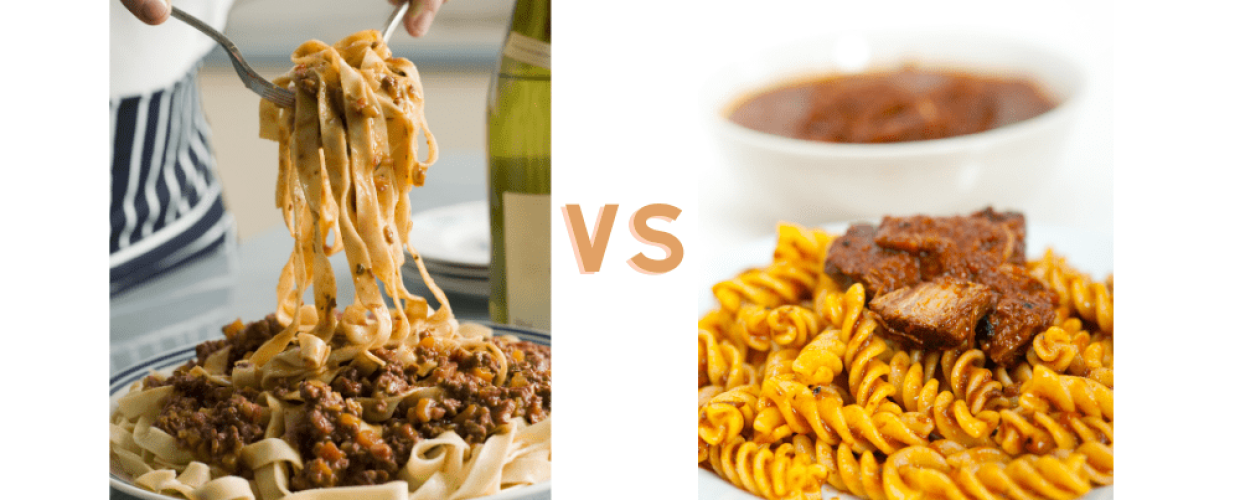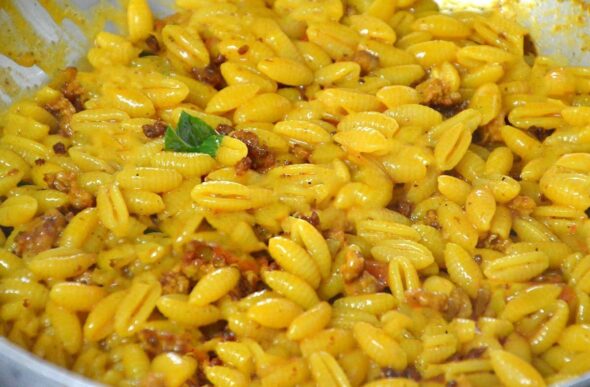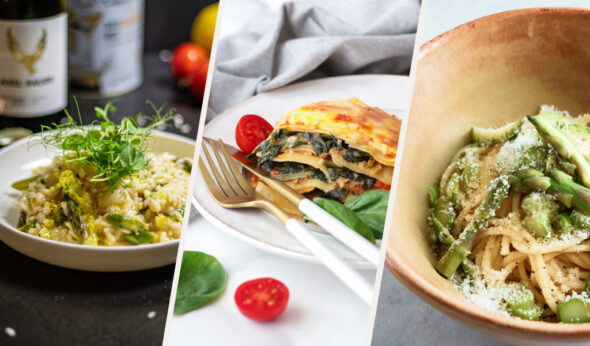Bolognese or Neapolitan ragù? Nice dilemma. In this article, we are talking about two symbols condiments of the Italian gastronomic tradition. Both very tasty, both children of the exceptional culinary traditions of their respective cities. But what are the differences between these two sauces? What is it that makes these two types of meat sauce so different and so special (and delicious?). How can someone prefer one to the other? They are both synonymous with Italian cuisine at the highest levels but, abroad, it is only the Bolognese ragu that is known and appreciated.
The main difference is linked to the different cut of meat used in the preparation. Bolognese ragù is made with minced meat, Neapolitan ragù with pieces of whole meat.
The traditional text containing the method of preparation of Bolognese sauce was deposited on October 17, 1982, by the Bolognese delegation of the Academy of Italian Cuisine at the Chamber of Commerce of the Emilian capital (find the recipe for lasagna alla Bolognese here)
Unlike the Bolognese cuisine, an official document containing the dictates for the preparation of the Neapolitan ragù has not been deposited before. There are numerous variations, while there is a commonality of interpretations on the origin of the term ragù, which derives from the French ragout: stew.
The preparation of the Neapolitan-style ragout involves the use of 1 kg of thick flank, 1 slice of beef meat to be prepared in advance by filling it with a clove of garlic and then rolled and closed with toothpicks, pine nuts, sultanas soaked in water, a sprig of parsley and some grated pecorino, as well as 400 grams of pork ribs, 400 grams of sausages, 2 medium pork rinds, 2 litres of tomato passata, a spoonful of tomato paste, two golden onions, oil and a quarter of a litre of red wine. Tradition has it that the preparation of the ragù starts the night before.
First, you need to brown the onions and various types of meat in oil, turning them every now and then with a wooden spoon without piercing them during cooking. At this point the wine must be poured and made to evaporate, then the tomato passata and the puree must be added. Salted and brought to a boil, then lowered at a minimum heat and let simmer slowly for about six hours. This is mandator for a traditional Neapolitan ragu. With this sauce, you can season pasta, usually candles, rigatoni, tagliatelle or gnocchi.
In Naples, ragu is rooted in the history and memories of all families, since the post-war period, when “since not everyone could afford to buy the meat needed to cook it”.
There are many variations of ragu in other regions as well. Certainly much less known but equally good, such as ragù “alla barese”(usually with pork, beef and lamb that are cut into pieces together with the veal brassiere in an earthenware pot and left to cook in the sauce of tomato for hours and hours) and the ragù alla potentina (prepared by lining a large steak stuffed with pieces of pecorino lucano and chopped garlic and parsley, well tied and browned with oil and lard as usually cooked in a terracotta pan, with tomato sauce).
Genoese ragù, despite its name, is also a Neapolitan ragù, mentioned for the first time by the poet Guido Cavalcanti as early as the fourteenth century. It probably owes the definition to a Neapolitan cook who had the surname, nickname or origin of “Genoese”. It is one of the typical recipes for Sunday lunch: a sauce of onions and meat cooked together slowly until it forms when cooked, a thick, brownish cream that is used to season pasta. The meat, very tender, is served as a second course.
Ragù has always been a symbol, a “social status” but also and above all of the Sunday tradition of family reunification, of a sense of conviviality that is very strong in this region. And that unites two cities, Bologna and Naples, albeit so geographically distant.
What’s your favourite ragu?
BUON APPETITO!









